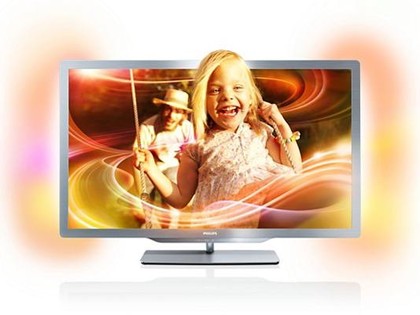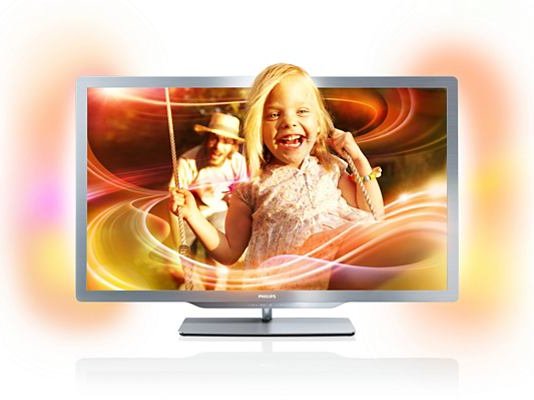Why you can trust TechRadar

Let's go straight to Easy 3D. When viewing active shutter 3D TVs, donning the glasses means a drastic reduction in brightness. That's not the case with passive 3D TVs like the Philips 42PFL7666 - at least, not much. What's immediately obvious after putting the 3D glasses on is that it's possible to see the panel's horizontal and vertical pixel structure. However, sit a few metres back and that problem instantly disappears.
Passive 3D on this LED TV is a success, but not a total one. Sure, there is a reduction in detail compared to active shutter 3D TVs, but this wasn't hugely noticeable during our test footage from Alice in Wonderland and The Ultimate Wave Tahiti 3D.
3D performance
Another 3D movie trailer, this time a rehashed 3D version of The Nightmare Before Christmas, looks reasonably good, largely because the 3D depth is noticeable but slight, and there are few of the attention-grabbing front effects that tend to disrupt as well as dazzle.
Legends of Flight 3D is next up, and shows off the 3D format at its best and worst. A slow panning shot of a biplane is smooth and impressive, if not as detailed as it could be, but in the very next scene a glider flies against a stunning background of mountain scenery that shimmers and judders considerably. Objects at the front of the shot are often impossible to decipher.
Easy 3D does mean living with shimmering, a visible pixel grid in mono shots and less detail, but it's always comfortable to watch and for most viewers isn't as huge a step down in quality from active shutter 3D TVs as some would have you believe.
Plus if you live in a large household, the far cheaper 3D glasses will more than justify a slight drop in detail.
2D performance
Back in two dimensions, we noticed some horizontal judder. As the camera pans down, in this case during adverts for Apple's iPod touch where the main actor wears a horizontally striped T-shirt, there's a definite judder and blur as he jumps, though objects going from left to right are a lot smoother.
Smooth colour gradations pervade everything on the Philips 42PFL7666, which should be considered an advanced performer with high-definition sources. HD channels look awesome in terms of clarity, fluidity and colour, and it's a similar story with Blu-ray, although we're sure there are TVs elsewhere in Philips' range that boast better contrast.
The Philips 42PFL7666's Edge LED backlighting system is partially successful; true black is never achieved, but it gets pretty close in dark scenes. Find a mixed brightness scene, such as in our test disc 3:10 to Yuma on Blu-ray where a character sits alone in a darkened room while sunlight streams in through the door, and that black loses its lustre on its way to blue. Ambilight does increase the perception of contrast, but let's not over-egg that effect - it's only slight.
Super Resolution, which is designed to upscale standard definition TV channels and DVDs, is also an acquired taste. If you look at a paused picture you can detect a slight increase in detail, but in a moving picture it's almost impossible to see, unlike the odd artefact around moving objects, which is frequently visible with this mode engaged.
Jamie is a freelance tech, travel and space journalist based in the UK. He’s been writing regularly for Techradar since it was launched in 2008 and also writes regularly for Forbes, The Telegraph, the South China Morning Post, Sky & Telescope and the Sky At Night magazine as well as other Future titles T3, Digital Camera World, All About Space and Space.com. He also edits two of his own websites, TravGear.com and WhenIsTheNextEclipse.com that reflect his obsession with travel gear and solar eclipse travel. He is the author of A Stargazing Program For Beginners (Springer, 2015),

